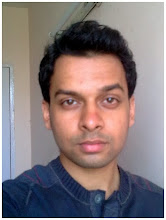Explain the significance of a business model in e-business. How is its role different from that of a business strategy?
The e-Business model, like any business model, describes how a company functions; how it provides a product or service, how it generates revenue, and how it will create and adapt to new markets and technologies. It has four traditional components as shown in the figure, The e-Business Model. These are the e-business concept, value proposition, sources of revenue, and the required activities, resources, and capabilities. In a successful business, all of its business model components work together in a cooperative and supportive fashion.
Business strategy is our selection of ideas and assets to meet our long-term goals
We can break down strategy into three components:
Formulating a business strategy is a complex task even for the smallest of organizations. Furthermore, whether you’re the manager of a small group in an organization or the CEO of a large company, you’ll be working with strategic issues.
Creating the business strategy begins with the business idea. In the case of our Italian restaurant, our business idea is authentic Italian cooking, based upon Grandma’s recipes. But as we know, the idea is not enough.
Business strategy is our selection of ideas and assets to meet our long-term goals
We can break down strategy into three components:
- Create the strategy—What should we do?
- Implement the strategy—How do we do it?
- Evaluate the strategy—How well are we doing in meeting our long-term goals?
Formulating a business strategy is a complex task even for the smallest of organizations. Furthermore, whether you’re the manager of a small group in an organization or the CEO of a large company, you’ll be working with strategic issues.
Creating the business strategy begins with the business idea. In the case of our Italian restaurant, our business idea is authentic Italian cooking, based upon Grandma’s recipes. But as we know, the idea is not enough.

Comments
Post a Comment